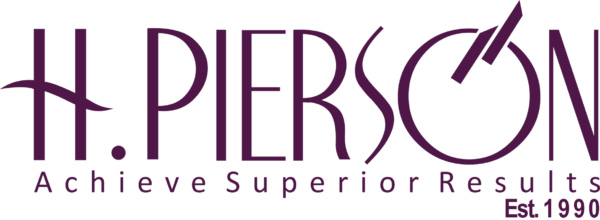Use these 10 strategies to attract and retain skilled workers.
- Writing good job descriptions can help you find the best employees.
- Job seekers want comprehensive salaries and benefits, inclusive company cultures, and ample career development opportunities.
- Training management can have a big impact on employee retention.
- This article is for business owners and hiring managers looking to attract and retain top talent.
Every business wants to attract and retain the best employees, but this is often easier said than done. A 90% retention rate and a 10% turnover rate are considered “good,” but a 2021 Bureau of Labor Statistics report found an average annual turnover rate closer to 57%. This means that the fight for talent is tougher than ever before.
Simply offering a large salary isn’t enough anymore. Job seekers want to work for inclusive organizations that offer great salaries and benefits, inclusive company cultures and ample career development opportunities. They also prioritize companies that align with their goals and values. Employers should keep this in mind as they think about which strategies they can use to not only attract the best workers, but also keep them long term.
Although your recruitment and retention strategy will be unique to your business, here are 10 ways you can attract and retain skilled workers.
1. Write good job descriptions.
The first step to attracting skilled workers who match your needs is writing a good job description. A well-written job description can make a big difference in finding qualified candidates.
- Content: A job description is much more than a simple list of employee responsibilities; it is often one of the first impressions a job seeker has of your organization. As such, an effective job description should not only include skills, tasks, expectations and role requirements, but also give the reader a feel for your company culture. A recent study by Skynova showed that 7 in 10 job seekers find salary to be the most important aspect of a job posting, followed by the benefits package. As such, it can be beneficial to include this information as well.
- Tone: The way you write your job descriptions should match your company and brand. For example, if you have a lighthearted, goofy company culture, consider using words that convey the silly nature of your workplace. However, steer clear of words such as “guru,” “ninja” and “wizard.” The Skynova study found that many job seekers respond negatively to these terms.
- Format: Format your job descriptions in a way that is easy to read. Use headers and bullet points when writing out details like requirements and responsibilities, as this will make the job description easier to scan. You will also want to include a clear call to action so that applicants know how to apply.
2. Be intentional with your hiring process.
According to a survey by BambooHR, 31% of workers leave a job within the first six months, and 68% of those depart within the first three months. A strategic recruitment and onboarding process can reduce these high turnover rates by helping new employees feel connected to their roles.
Employee recruitment
Find out which websites and job boards most align with your organization and the employees you are looking for. Asking employees for referrals is also a great strategy for finding reliable talent. You can use recruitment software or applicant tracking systems to manage your talent pipeline from start to finish.
Employee interviews
When hiring new employees, it helps to have a recruitment process that is uniform and consistent across the board. Train your HR and hiring managers on how to conduct effective employee interviews, including which types of questions they can and can’t ask. This will make your hiring process more productive and equitable.
Employee onboarding
Your hiring responsibilities don’t stop when you offer an applicant the job and they accept. You will also need a comprehensive onboarding process that reviews all required paperwork, welcomes and trains the new employee, and quickly integrates them into your team.
3. Offer competitive compensation.
Although it’s not the only thing that matters to employees, a competitive salary is still top of mind when job seekers look for a new job. If you want to hire skilled workers, you must be prepared to pay them what they are worth. Start by reviewing the industry average for employee salaries. You can also use salary benchmarks based on location, role and experience.
Pay isn’t the only way to compensate employees for a job well done. Consider other forms of compensation, such as employee retirement plans, bonuses, paid time off and stock options. Offering a diverse combination of compensation can make a job offer more attractive.
4. Build a comprehensive employee benefits package.
Although you are legally obligated to offer only a few employee benefits (e.g., family and medical leave, health insurance, unemployment insurance, and workers’ compensation, as well as FICA contributions that fund public benefits like Social Security and Medicare), creating a comprehensive benefits package is essential to attracting the best employees. Employee benefits are a great way to improve your employees’ health, well-being, job satisfaction and productivity.
The most popular employee benefits fall into five categories: health and wellness, financial well-being, work-life balance, professional development, and diversity, equity and inclusion. Create a benefits package that offers some combination of these elements.
5. Provide employee development opportunities.
A Work Institute survey found that a lack of career development opportunities is the biggest reason why employees quit their jobs. If you want to retain your most valued employees, you must provide them with a clear path to future development. Each employee should have their own career development plan that is unique to their strengths and interests.
Here are a few ways you can foster career development:
- Identify clear goals to work toward. Have your employees clearly identify their career goals and then come up with a development plan to achieve them. Periodically measure employee success to see if they are progressing toward their goals or if they need assistance.
- Offer training courses. Offer in-person or online training opportunities for employees to learn and build their career knowledge.
- Create a mentorship program. Identify less experienced employees who show potential, and pair them with mentors who can help guide their careers with the company.
- Offer stretch assignments. Provide internal staff with challenging projects just beyond their comfort zone. It will expand their skill sets and build their confidence.
- Promote from within. Although you won’t always find the right candidate for a senior role from your current pool of employees, consider hiring from within when a position becomes available. If you know you will need to fill a position in the future and it aligns with one of your employee’s development goals, create a cross-training program that will enable them to earn that spot.
6. Recognize your employees.
Make your employees feel appreciated and valued. You can do this by creating an employee recognition program. Although your recognition program should be fair and equitable to all employees, it’s important to note that not all employees want to be recognized in the same way. Therefore, you should be strategic about how you create your program.
One way you can create an employee recognition plan that is unique and meaningful to each employee is to use a points system. For example, employees can earn points for their achievements and then spend them on the rewards they value most (e.g., gift cards, company swag, experiences). You can also survey your employees to learn which incentives are most engaging to them.
7. Prioritize company culture.
Company culture can impact employee job satisfaction in a big way. Many people want to work for an inclusive workplace that values and celebrates staff diversity. This all starts at the hiring process. Be intentional about whom you hire. Your company leadership also plays a huge role, as company culture usually flows from the top of the organization. For example, if your team leaders constantly show up late to meetings and talk negatively about staff members, other employees will also think it is okay to treat people this way in the workplace.
8. Monitor employee engagement and burnout.
One key to retention is employee engagement. High employee engagement can reduce employee turnover and absenteeism, as well as increase productivity and company morale. You can improve employee engagement by encouraging open communication and feedback, among many of the other tips mentioned in this article.
In addition to keeping employees engaged, you want to ensure they are not experiencing workplace burnout. Your best employees can often be saddled with the most work, which can quickly result in fatigue, negativity and reduced productivity. Bring in skilled temporary professionals to relieve overburdened staff and support resource-intensive projects.
9. Communicate your company mission and vision.
Another way you can attract and retain employees is to clearly communicate your company mission and vision statement. These are the goals and values of your organization. People want to work for an organization that they identify with. They want to know that the organization is acting in a way that they trust and support. Not everyone will click with your mission and values, and that’s okay. That’s why you want to clearly communicate these from the start, so you can build an organization filled with people that truly support your purpose.
10. Train your management staff.
It is important that your company leaders are properly trained on how to successfully manage their teams, as good managers can have a big impact on employee retention. In fact, Gallup found that 52% of departing employees claim their manager or organization could have done something to prevent them from resigning.
Perhaps these managers were thrown into the fire without the proper tools. In a study by Udemy, 60% of respondents think that managers need more training, and 56% of respondents think that people are promoted too quickly. Effective leadership training programs can help your team build their leadership skills and better manage employees, resulting in a higher employee retention rate.
Author:Skye Schooley





 Board leadership is critical to making any changes happen. The board leader sets the tone for the culture of the board, and in many cases leads and drives the assessment process. In fact, 85% of directors indicate that a strong focus from the board chair or lead director is an effective method to drive board refreshment.3 Without a strong leader, it doesn’t matter how meaningful your assessment process is.
A close look at board culture and whether directors really can be candid when providing feedback is also needed. This involves understanding the way that directors make decisions, handle disagreements and share information. If the board is to continue to grow and improve, the culture has to be open to the idea of giving — and receiving — regular feedback. And, board leadership is key to ensuring this environment exists.
Board leadership is critical to making any changes happen. The board leader sets the tone for the culture of the board, and in many cases leads and drives the assessment process. In fact, 85% of directors indicate that a strong focus from the board chair or lead director is an effective method to drive board refreshment.3 Without a strong leader, it doesn’t matter how meaningful your assessment process is.
A close look at board culture and whether directors really can be candid when providing feedback is also needed. This involves understanding the way that directors make decisions, handle disagreements and share information. If the board is to continue to grow and improve, the culture has to be open to the idea of giving — and receiving — regular feedback. And, board leadership is key to ensuring this environment exists.  Let’s face it, the word “assessment” can have a negative connotation. It can put people on edge, even in a boardroom of high-performers. Because of the collegial nature of many boards, it can sometimes be hard to deliver less than glowing feedback about a fellow director — which can turn the process into “something to get finished” rather than a way to enhance board performance. So what can boards do?
Take a fresh look at the approach: Boards can improve the value of their assessment process by focusing on continuous improvement and board excellence. Effective assessments should look at ways to enhance board dynamics, composition, oversight and practices. They should reinforce what is working well and highlight those obstacles that are limiting strong performance. And, the assessment is best viewed as an ongoing process rather than just a once a year event.
Some boards have embraced a continuous improvement mindset by adding more frequent opportunities to discuss effectiveness as part of their agendas. Others have instituted a formal process for providing director feedback or coaching throughout the year. Boards can also take a fresh look at their assessment approach and evolve the format or ask different questions to drive a better outcome. They may even find it valuable to dive deeper on a few particular areas where they believe there is potential improvement.
Get early buy-in: Before the assessment process begins, directors should discuss the approach and decide on any changes they wish to make. This involves engaging directors early and giving them a chance to provide input and voice their concerns so these items can be addressed appropriately. The discussion should cover the assessment’s scope and objectives, how it will be conducted and reported back, and the need to openly share and receive feedback. The goal is to get agreement on what the assessment process should accomplish and obtain commitment and support for it.
Let’s face it, the word “assessment” can have a negative connotation. It can put people on edge, even in a boardroom of high-performers. Because of the collegial nature of many boards, it can sometimes be hard to deliver less than glowing feedback about a fellow director — which can turn the process into “something to get finished” rather than a way to enhance board performance. So what can boards do?
Take a fresh look at the approach: Boards can improve the value of their assessment process by focusing on continuous improvement and board excellence. Effective assessments should look at ways to enhance board dynamics, composition, oversight and practices. They should reinforce what is working well and highlight those obstacles that are limiting strong performance. And, the assessment is best viewed as an ongoing process rather than just a once a year event.
Some boards have embraced a continuous improvement mindset by adding more frequent opportunities to discuss effectiveness as part of their agendas. Others have instituted a formal process for providing director feedback or coaching throughout the year. Boards can also take a fresh look at their assessment approach and evolve the format or ask different questions to drive a better outcome. They may even find it valuable to dive deeper on a few particular areas where they believe there is potential improvement.
Get early buy-in: Before the assessment process begins, directors should discuss the approach and decide on any changes they wish to make. This involves engaging directors early and giving them a chance to provide input and voice their concerns so these items can be addressed appropriately. The discussion should cover the assessment’s scope and objectives, how it will be conducted and reported back, and the need to openly share and receive feedback. The goal is to get agreement on what the assessment process should accomplish and obtain commitment and support for it.  What holds boards back from top performance? Board culture and interpersonal dynamics tend to be the most common sources of dysfunction in the boardroom. Dysfunction can take various forms, whether it is a lack of trust between the board and CEO, disruptive or disengaged directors, factions in the boardroom or poor decision-making processes. These issues, though sometimes apparent to those in the boardroom, can be the most difficult to address. \
What holds boards back from top performance? Board culture and interpersonal dynamics tend to be the most common sources of dysfunction in the boardroom. Dysfunction can take various forms, whether it is a lack of trust between the board and CEO, disruptive or disengaged directors, factions in the boardroom or poor decision-making processes. These issues, though sometimes apparent to those in the boardroom, can be the most difficult to address. \
 Committing the time to review the results of the assessment process and having an open discussion about the findings are critical. But boards often fall short as they spend too little time — or even no time — discussing and acting upon assessment findings. This is a missed opportunity.
Agree on action items and develop a plan for change: Directors should work together during the assessment process to identify and agree on areas in which the board would like to improve. Areas for improvement might be to add a director with particular experience, increase the board’s diversity, schedule a board retreat that focuses on strategy, create more opportunities to communicate with the CEO or hold more frequent executive sessions. At the individual level, a director may be advised to attend an educational program to enhance knowledge in a particular area, engage more often in discussions or change behavior in the boardroom.
Committing the time to review the results of the assessment process and having an open discussion about the findings are critical. But boards often fall short as they spend too little time — or even no time — discussing and acting upon assessment findings. This is a missed opportunity.
Agree on action items and develop a plan for change: Directors should work together during the assessment process to identify and agree on areas in which the board would like to improve. Areas for improvement might be to add a director with particular experience, increase the board’s diversity, schedule a board retreat that focuses on strategy, create more opportunities to communicate with the CEO or hold more frequent executive sessions. At the individual level, a director may be advised to attend an educational program to enhance knowledge in a particular area, engage more often in discussions or change behavior in the boardroom.  Shareholders are seeking more information about how boards address their own performance, including whether they are using assessments as a catalyst for refreshing the board. Today, disclosures are increasing in this area. Twenty-two percent (22%) of S&P 250 companies included a graphic to illustrate their evaluation process in the 2019 proxy statement. Eight percent (8%) provided results and steps in place to address any issues.8
Benchmark disclosure on assessments and consider voluntarily expanding it: Boards are generally doing more than they disclose. And, with the increasing spotlight on board performance, the time may be right to reassess these voluntary disclosures and provide more insight. The Council of Institutional Investors (CII) suggests that “[s]uch disclosure is an indication that a board is willing to think critically about its own performance on a regular basis and tackle any weaknesses.”9
CII highlights two best practice models for disclosure. One focuses on the mechanics of the assessment process, illustrating the process the board uses to identify and address gaps in its skills and performance. The other focuses on the most recent assessment, recapping the key takeaways and plans for improvement.
CII notes that depending on the board’s process, disclosure may include:
A description of the steps in the board evaluation, including who is reviewed and how reviews are conducted
A discussion of continuous improvement initiatives and the activities that directors participated in during the past year
Whether the board engaged an external adviser to conduct the board evaluation and the role that the adviser played (for example, interviewing board members)
The objectives for the evaluation and how the board will use the findings
Follow-up discussions that occurred. For example, some boards report having a mid-year check-in to evaluate the progress made in addressing areas of focus identified in the annual evaluation
Boards can ask management to benchmark the company’s disclosure about the board assessment process with that of peer companies. They can also ask them to draft a sample enhanced disclosure that includes additional information on the board’s assessment practices and considers insights drawn from management’s review of other companies’ disclosures and shareholders’ perspectives. This information can help the board to critically evaluate whether it should voluntarily enhance its proxy disclosures.
Be prepared for potential engagement with shareholders on self-assessments: Direct communications between board members and investors has grown considerably over the last several years. Fifty-eight percent (58%) of directors now say their board has such engagement. Shareholders are more often meeting with nominating/governance chairs and asking about board assessments as part of their engagement program. One survey found that in nearly 14% of cases, board-shareholder engagement was conducted under the guidance of the nominating/governance committee chair. If board composition is part of engagement, shareholders may want to understand how boards are assessing their own performance and the skills and expertise needed to oversee the company’s long-term strategy. They also want to understand the board’s position on director turnover, succession planning and diversity. Some high-performing boards even conduct “opposition research” to understand and identify what a tough critic would say about their board’s composition to be prepared for any potential engagement.
Shareholders are seeking more information about how boards address their own performance, including whether they are using assessments as a catalyst for refreshing the board. Today, disclosures are increasing in this area. Twenty-two percent (22%) of S&P 250 companies included a graphic to illustrate their evaluation process in the 2019 proxy statement. Eight percent (8%) provided results and steps in place to address any issues.8
Benchmark disclosure on assessments and consider voluntarily expanding it: Boards are generally doing more than they disclose. And, with the increasing spotlight on board performance, the time may be right to reassess these voluntary disclosures and provide more insight. The Council of Institutional Investors (CII) suggests that “[s]uch disclosure is an indication that a board is willing to think critically about its own performance on a regular basis and tackle any weaknesses.”9
CII highlights two best practice models for disclosure. One focuses on the mechanics of the assessment process, illustrating the process the board uses to identify and address gaps in its skills and performance. The other focuses on the most recent assessment, recapping the key takeaways and plans for improvement.
CII notes that depending on the board’s process, disclosure may include:
A description of the steps in the board evaluation, including who is reviewed and how reviews are conducted
A discussion of continuous improvement initiatives and the activities that directors participated in during the past year
Whether the board engaged an external adviser to conduct the board evaluation and the role that the adviser played (for example, interviewing board members)
The objectives for the evaluation and how the board will use the findings
Follow-up discussions that occurred. For example, some boards report having a mid-year check-in to evaluate the progress made in addressing areas of focus identified in the annual evaluation
Boards can ask management to benchmark the company’s disclosure about the board assessment process with that of peer companies. They can also ask them to draft a sample enhanced disclosure that includes additional information on the board’s assessment practices and considers insights drawn from management’s review of other companies’ disclosures and shareholders’ perspectives. This information can help the board to critically evaluate whether it should voluntarily enhance its proxy disclosures.
Be prepared for potential engagement with shareholders on self-assessments: Direct communications between board members and investors has grown considerably over the last several years. Fifty-eight percent (58%) of directors now say their board has such engagement. Shareholders are more often meeting with nominating/governance chairs and asking about board assessments as part of their engagement program. One survey found that in nearly 14% of cases, board-shareholder engagement was conducted under the guidance of the nominating/governance committee chair. If board composition is part of engagement, shareholders may want to understand how boards are assessing their own performance and the skills and expertise needed to oversee the company’s long-term strategy. They also want to understand the board’s position on director turnover, succession planning and diversity. Some high-performing boards even conduct “opposition research” to understand and identify what a tough critic would say about their board’s composition to be prepared for any potential engagement. 








